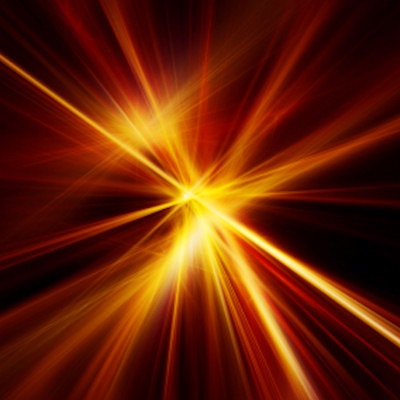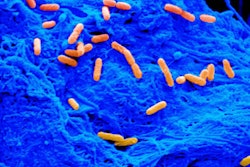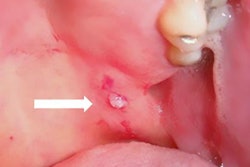
Is an erbium, chromium-doped yttrium, scandium, gallium, and garnet (Er,Cr:YSGG) laser effective for treating peri-implantitis? A new in vitro study showed that this laser eliminated two different colonies of bacteria on dental implants.
When treating patients with peri-implantitis, it is crucial to avoid damaging the surface of the implant and increasing bacterial resistance, as some existing decontaminants do. Researchers wanted to see if an Er,Cr:YSGG laser (Waterlase iPlus, Biolase) was an effective alternative treatment (Materials, June 27, 2019).
The group used 50 microtextured treatment implants (tapered screw-vent MTX, Zimmer Biomet) with a rough surface for the study. The implants have a uniform surface of closely spaced micropits, the researchers noted.
Half of the implants were contaminated with Acinetobacter baumannii and the other half with Pseudomonas aeruginosa. They divided the implants into five groups for decontamination comparison:
- In the first group, decontamination was done with an Er,Cr:YSGG laser (2780 nm).
- In the second group, decontamination was done using a 650-nm diode laser.
- In the third group, decontamination was done using a different photodynamic therapy (an 808-nm diode laser).
- In the fourth group, decontamination was done with 0.12% chlorhexidine.
- The fifth group was the control group with no decontamination.
The researchers viewed the implants under a scanning electron microscope after decontamination. They also counted the number of colony forming units on the implants (see table below). The Er,Cr:YSGG laser showed the best results in decontaminating the implant surface.
| Colony forming units for tested bacteria in relation to decontamination methods | |||||
| Colony type | Control group | Er,Cr:YSGG laser | 650-nm diode laser | 808-nm diode laser | 0.12% chlorhexidine |
| Acinetobacter baumannii | 10,880 ± 563 units | 1.2 ± 1.3 units | 9176 ± 401 units | 4360 ± 421 units | 1536 ± 382 units |
| Pseudomonas aeruginosa | 12,362 ± 481 units | 1.4 ± 1.3 units | 7673 ± 307 units | 8156 ± 552 units | 1464 ± 207 units |
A significant difference was observed between the Er,Cr:YSGG laser group and the other groups, the researchers reported. Chlorhexidine proved to be better in decontaminating the implant surface than either of the diode laser groups. Scanning electron microscope analysis showed no significant change in the implant surface topography.
The researchers noted several study limitations:
- This was an in vitro study.
- Only a single setting was used on the laser. A different setting might determine an optimal setting limit for use without surface damage to the implant.
- Only a single implant surface was used. The authors recommended further research using different implant surfaces to examine the efficacy of the recommended laser settings.
The group concluded that the laser was a useful treatment option.
"The Er,Cr:YSGG laser is an effective alternative treatment modality for decontamination of dental implant surfaces without damaging the surface topography," the authors concluded, led by Adel Alagl, BDS, DSc, of the department of preventive dental sciences at the College of Dentistry at Imam Abdulrahman Bin Faisal University in Dammam, Saudi Arabia.



















